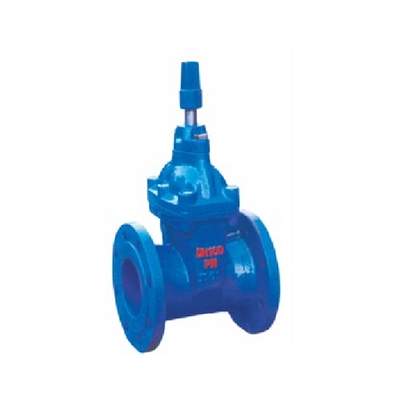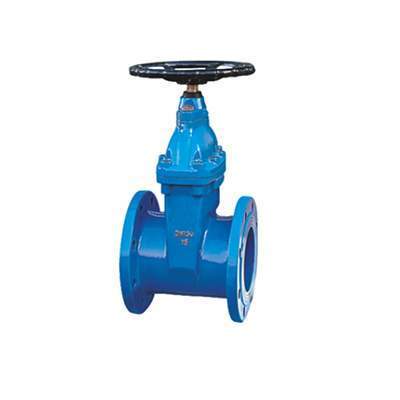Welcome to My Blog!
Before we dive into the content, I’d love for you to join me on my social media platforms where I share more insights, engage with the community, and post updates. Here’s how you can connect with me:
Facebook:https://www.facebook.com/profile.php?id=61563865935136
Now, let’s get started on our journey together. I hope you find the content here insightful, engaging, and valuable.
Introduction

Resilient seat gate valves represent a cornerstone in modern fluid control systems, offering a reliable and efficient means of on/off service across a diverse range of applications. Unlike their metal-seated counterparts, resilient seat gate valves incorporate an elastomeric material, such as EPDM, NBR, or PTFE, bonded to the gate or body seat. This innovative design provides a bubble-tight seal when the valve is closed, preventing leakage and ensuring system integrity. The inherent advantages of this sealing mechanism have led to the widespread adoption of resilient seat gate valves in numerous industries. This blog post will delve into the various applications and uses of resilient seat gate valves, highlighting their key features, benefits, and suitability for different operational environments. Understanding the versatility of the resilient seat gate valve is crucial for engineers and professionals involved in fluid handling and process control.
Key Features and Benefits of Resilient Seat Gate Valves
The popularity of resilient seat gate valves stems from a multitude of advantageous features. The primary benefit is the achievement of a zero-leakage seal, which is paramount in applications where even minimal leakage is unacceptable. This tight shut-off capability not only prevents loss of valuable media but also contributes to enhanced safety and environmental protection. Furthermore, the resilient seat design often compensates for minor debris or imperfections in the pipeline, ensuring a reliable seal even under less-than-ideal conditions. Compared to metal-seated valves, resilient seat gate valves typically require lower operating torque, making them easier to actuate manually or with smaller actuators. This can translate to cost savings and simplified system design. The elastomeric seat also provides excellent corrosion resistance against a wide range of chemicals and fluids, extending the valve’s lifespan and reducing maintenance requirements. The combination of tight sealing, ease of operation, and durability makes the resilient seat gate valve a compelling choice for numerous fluid control applications.
Diverse Applications in Water and Wastewater Treatment
Resilient seat gate valves play a critical role in water and wastewater treatment plants. Their ability to provide a bubble-tight seal is essential for controlling the flow of raw water, treated water, sludge, and various chemical additives. In intake structures, resilient seat gate valves regulate the flow of water entering the plant. Within the treatment process, they are used for isolating different stages, controlling flow to filters and clarifiers, and managing the distribution of disinfection agents. In wastewater treatment, these valves handle the flow of effluent, sludge transfer, and the control of air and chemical injection systems. The corrosion-resistant properties of the resilient seat material are particularly beneficial in these environments, where exposure to water, chemicals, and abrasive solids is common. The reliable shut-off provided by the resilient seat gate valve ensures efficient plant operation and prevents contamination.
Industrial Uses in Chemical and Petrochemical Processing
The chemical and petrochemical industries rely heavily on resilient seat gate valves for their demanding fluid control needs. These valves are employed in various processes, including the handling of corrosive chemicals, hydrocarbons, and other aggressive media. The choice of seat material, such as PTFE, ensures compatibility with a wide spectrum of chemical substances. Resilient seat gate valves are used for isolating process units during maintenance, controlling flow in pipelines, and ensuring the safe handling of hazardous materials. The tight sealing capability is crucial in preventing leaks of potentially dangerous or environmentally damaging substances. Their ease of actuation is also advantageous in automated process control systems. The durability and resistance to chemical attack make the resilient seat gate valve a dependable component in these critical industrial applications.
Applications in Power Generation and Distribution
In the power generation sector, resilient seat gate valves find applications in various stages of the process. They are used in cooling water systems to control the flow of water for heat exchange. In boiler feed water systems, these valves can isolate sections for maintenance. They also play a role in the handling of steam and other process fluids at lower pressure and temperature ranges. In power distribution networks, resilient seat gate valves are used for isolating sections of pipelines for maintenance and repair. The reliable sealing and ease of operation are important factors in ensuring the efficient and safe operation of power plants and distribution systems. The selection of appropriate seat materials ensures compatibility with the specific fluids and temperatures involved in these applications.
Utilization in HVAC and Building Services
Resilient seat gate valves are also widely used in heating, ventilation, and air conditioning (HVAC) systems and other building services. They provide effective flow control for chilled water, hot water, and other fluids used in these systems. Their tight shut-off capability ensures efficient temperature control and prevents energy losses due to leakage. The lower operating torque makes them suitable for manual operation or with smaller actuators in building management systems. The corrosion resistance of the resilient seat material contributes to the longevity and reliability of these valves in building service applications. From isolating sections of piping for maintenance to regulating flow in distribution networks, resilient seat gate valves are an integral part of ensuring comfortable and efficient building environments.
Agricultural and Irrigation Applications
The agricultural and irrigation sectors benefit significantly from the use of resilient seat gate valves. These valves are employed in irrigation systems to control the flow of water to different fields and sections. Their tight sealing capability minimizes water loss, contributing to efficient water management. The corrosion resistance of the resilient seat material is crucial in handling irrigation water, which can contain sediments and minerals. The ease of operation allows for convenient manual control in often remote agricultural settings. Resilient seat gate valves are used in main pipelines, distribution lines, and at the inlet of irrigation equipment, providing reliable flow control for efficient crop irrigation and water conservation.
Comparison Table of Resilient Seat Gate Valve Applications

| Application Area | Media Handled | Key Benefits | Typical Valve Sizes | Common Seat Materials |
|---|---|---|---|---|
| Water Treatment | Raw water, treated water, chemicals, sludge | Bubble-tight seal, corrosion resistance, reliable operation | DN50 – DN1200 | EPDM, NBR |
| Wastewater Treatment | Effluent, sludge, chemicals, air | Tight shut-off, durability, resistance to abrasion and chemicals | DN80 – DN1500 | EPDM, NBR |
| Chemical & Petrochemical | Corrosive chemicals, hydrocarbons, process fluids | Chemical compatibility (seat material), tight sealing, safe operation | DN25 – DN600 | PTFE, Viton |
| Power Generation & Distribution | Cooling water, boiler feed water, steam (low P/T) | Reliable sealing, ease of operation, isolation capabilities | DN50 – DN1000 | EPDM, NBR |
| HVAC & Building Services | Chilled water, hot water, other fluids | Tight shut-off, low operating torque, corrosion resistance | DN20 – DN400 | EPDM |
| Agriculture & Irrigation | Irrigation water, fertilizers | Minimal water loss, corrosion resistance, easy manual operation | DN50 – DN800 | EPDM, NBR |
Conclusion
In conclusion, resilient seat gate valves have proven to be highly versatile and reliable components across a wide spectrum of industries. Their key advantages, including bubble-tight sealing, ease of operation, corrosion resistance, and adaptability to various media, make them an indispensable part of modern fluid control systems. From ensuring clean water supply and efficient wastewater treatment to enabling safe chemical processing and optimizing energy usage, the resilient seat gate valve plays a crucial role in numerous critical applications. Their continued innovation and development promise even broader utilization in the future. Experience the reliability and efficiency of our high-quality resilient seat gate valves. Contact us today to find the perfect solution for your specific needs!
FAQ
Q: What is the primary advantage of a resilient seat gate valve?
A: The primary advantage is its ability to provide a bubble-tight, zero-leakage seal when closed, ensuring system integrity and preventing media loss.
Q: In what types of applications are resilient seat gate valves commonly used?
A: They are commonly used in water and wastewater treatment, chemical and petrochemical processing, power generation, HVAC systems, and agricultural irrigation.
Q: What are the common materials used for the resilient seat?
A: Common seat materials include EPDM, NBR, and PTFE, each offering different levels of chemical resistance and temperature suitability.
